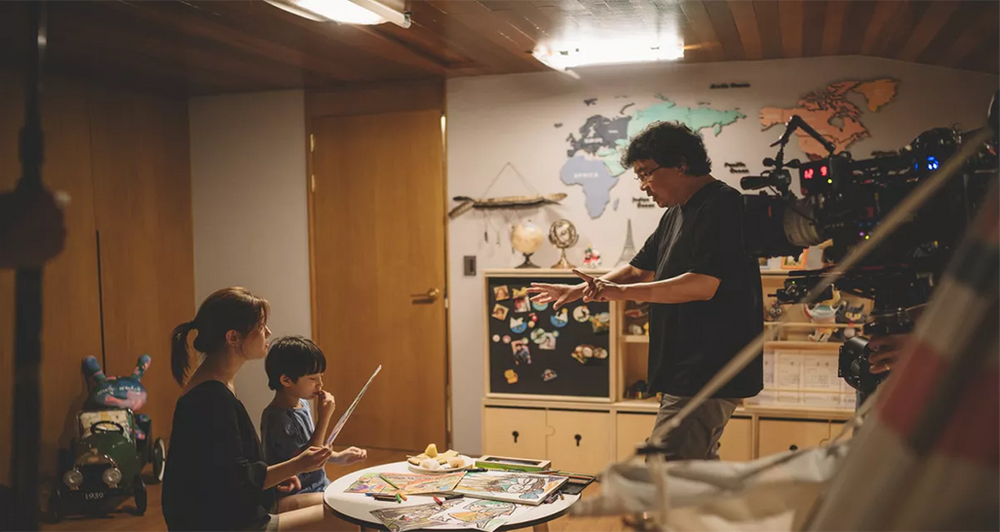Production
How To Direct Actors

Directors juggle a dizzying variety of tasks on and off set. Navigating those tasks is a dance of collaboration with other humans, none more visible in the final product than those who appear on-screen.
There’s a fine line between being a director and being a psychologist.Meera Menon, Director
When it comes to directing crew versus directing cast, there is a difference: to direct crew is to curate visual and aural aesthetics; to direct cast is to shape performance. To direct crew is to oversee the manipulation of equipment; to direct cast is to conduct the movement of humans.
To be a successful director, one does not necessarily need to have a high level of working knowledge in any given department, as there are typically department heads (i.e. DP, gaffer, production sound mixer, production designer, etc.) who will oversee the specifics of execution. However, the responsibility of directing actors falls squarely on the shoulders of the director alone. Thus many directors, especially those who have limited backgrounds in acting, find working with actors to be one of the most difficult and intimidating aspects of the job. Developing an effective way to work with actors takes time and experience – in this guide, we’ll offer some pointers for how you can sharpen your cast directing chops. (See here on how to build a film crew.)
Practice good leadership
When working with cast and crew alike, it’s important to remember that directing well always traces back to practicing the tenets of general good leadership:
- Know your goals and priorities. For a team to be successful, there needs to be a clearly defined purpose. Goals will drive direction. Have a firm understanding of what the end result should look like. Always work with that in mind and prioritize accordingly.
- Be firm and decisive when needed. Be clear when communicating what you would like to be done. It will often be up to you to make final calls; do so with conviction and with your goals in mind.
- Think collaboration rather than dictation. Your actors will look to you for direction, but the relationship should be more than just you telling them how to move and say their lines. Respect your cast for the creative abilities they bring to the table. Listen to and value their opinions. It’s a two-way street.
- Set the tone. As the leader, your work style will dictate the atmosphere on set. Encourage collaboration, openness, positive morale, and feelings of personal investment. Foster an environment in which your actors can tap into their full potential.
- Make yourself approachable and accessible. Ensure that your cast can easily come to you with any questions or concerns, and follow up with them as promptly as you can.
Casting: Make or break?
From inviting talent to running auditions, casting is a process, and an important one at that. Be as particular as you can in making cast selections. Find talent who interpret the roles in ways that you like, take direction well, and/or exhibit versatility.
Some may say that casting is half or even 90% of the work of obtaining a solid performance on-camera. That’s not always true, as there’s a lot of work that needs to be put in between director and actor on set, but the point is that casting well is vital to the production. As we’ll reiterate, trust is a major part of the director-actor relationship. The best-case scenario is to find talent that you can trust to interpret a role in a way that will work, whether that interpretation ultimately aligns with what you had in mind or not.
Once you’ve finalized casting decisions, take some time to familiarize yourself with your actors’ backgrounds. How much or how little experience do they have? What kind of roles have they played in the past? Though these details will most likely have been already reviewed during the casting process, it’s important for the director to understand their actors’ abilities moving forward.
Pre-production: Put some pep in that prep

It probably comes as no surprise that set can be a chaotic place where time often vanishes more quickly than anyone would like, even if things have been planned well beforehand. Even more reason to be meticulous and thorough in pre-production - in terms of working with actors, that translates into getting your cast oriented before the camera starts rolling.
- Get each cast member on board with the creative vision. This is vital not only for having everybody on the same page, but also for actors to be able to understand the kind of performance they’ll want to give. Review the script, shot list, mood board, and/or any other important creative documents in detail. Have discussions.
- Hold a table read. This is especially important if your project involves a lot of dialogue and interactions between characters. Table reads are a great way to get your cast to start rehearsing and vocalizing their lines, while also giving you and your creative collaborators an opportunity to hear the script and consider making changes.
- Similarly, rehearse and collect feedback. Don’t wait until you’re on set to start giving notes and directions for blocking. Give your actors ample opportunity to practice and modify their performances before shooting begins. Continue to modify the script as you see fit based off of your conversations with actors about what does and doesn’t work for them.
- Clearly communicate expectations, no matter how obvious. Tell your actors when they should have lines memorized by. You might consider assigning homework (research, thought exercises, etc.) depending on how deep of a character exploration is required. Make sure the cast is updated on call times and shooting schedules.
- Discuss your directing style with your cast. Directing styles vary, and your cast likely have experience working with many kinds. Have a conversation about what kinds of collaboration styles are ideal or nonideal. Try to come to a mutual understanding of how you’d like to communicate and operate on set.
Familiarize your cast with your crew. You might want to avoid having to speed through self-introductions on day one of shooting. Ideally, you’ll want the atmosphere on set to be as familiar and friendly as possible for everyone involved.

Production: Stoke the fires of creativity
When it comes to giving your actors notes on set, keep in mind that actors are creatives too. As a director, your job is to foster an environment that encourages actors to perform naturally and to their highest potential.
- Focus the actor(s) on the purpose of the scene. Just as you should direct with the goals of your creative vision in mind, actors should act to serve the objective of any given scene. Remind them of that objective as needed.
- Allow space for actors’ own interpretations. Remember - maintain a base level of trust in your actors. Be open to suggestions and spontaneity, even if it veers away from the script. Try to avoid micromanaging or giving direction that is too specific – this may stifle the actor’s performance and make it unnatural, as the actor will be focusing on meeting a set of expectations. It sometimes pays to be vague (e.g. “Let’s do that again and see what happens.” “That was good, let’s do it again.”).
- Give and receive respectful feedback. Film is a collaborative endeavor – keep an open line of communication during shooting. Offer concise notes before and after takes. Encourage actors with positive (but appropriately vague) feedback.
- If there’s more than one actor on screen for a scene, consider giving notes separately to each person. This will allow actors to focus on the authenticity of their own performances without knowing what notes other actors are working off of.
- Seek to put your actor in the shoes of their character. Actors will naturally be striving for this themselves, but your direction should supplement that aim.
- Instead of asking an actor to express an emotion, remind them of what context or circumstances the character is existing in. For example, rather than “Act exasperated,” say, “You’ve had a long week at work. It’s Saturday, you finally have a lazy morning to yourself, and then the cat pushes your mug off the table.”
- Use visual aids, if possible. Have on hand a storyboard, diagrams, random objects for visualizing blocking, etc. – anything that might clarify your direction to your actors.
- Feed your cast. As they say, a well-fed belly begets peak acting performance.

- Pro tip from Jason Satterlund, award-winning director and screenwriter:
After you secure the takes that you want, do one last extra take before moving on (time permitting). Tell your actors that this last take is for them to do whatever they’d like with it. Often this take is one of the best, as the actors feel liberated to perform without judgment or fear of ruining the shot.
Remember: at the end of the day, a director-actor partnership is the most human-focused working relationship on set. At its most intense, directing actors can feel like an exercise in the dissection and exploration of the human psyche. You might not need to get that deep, but if you do – come back here for a refresher.


